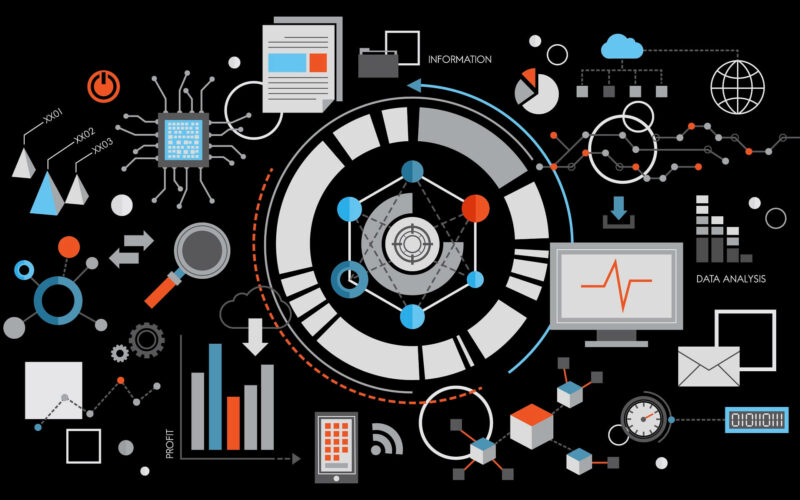With the rapid pace of technological advancements and ever-increasing competitive markets, businesses are constantly seeking ways to stay ahead. This is where Innovation Management Software comes into play. Innovation Management Software is a powerful tool that helps companies streamline their innovation processes, foster a culture of creativity, and ultimately drive growth. It enables businesses to collect, prioritize, and implement ideas efficiently, ensuring that no valuable insight is lost along the way.
By utilizing Innovation Management Software, organizations can break down silos, encourage collaboration among teams, and harness the collective intelligence of their workforce. This leads to a continuous flow of innovative ideas, improved problem-solving capabilities, and a higher rate of successful product launches. Moreover, with features such as idea evaluation, project tracking, and performance analytics, businesses can make data-driven decisions, allocate resources effectively, and measure the impact of their innovation efforts.
In essence, Innovation Management Software is not just a tool but a strategic asset that drives business success in today’s dynamic environment. By providing a structured framework for innovation, promoting cross-functional collaboration, and delivering actionable insights, this software empowers companies to adapt to change, stay relevant in the market, and ultimately achieve sustainable growth and competitive advantage.
Key Takeaways:
- Innovation Management Software (IMS) is a tool designed to streamline and enhance the innovation process within an organization.
- IMS helps businesses to collect, organize, and prioritize ideas from employees, customers, and stakeholders in one centralized platform.
- IMS enables collaboration among team members, fostering a culture of innovation and creativity within the company.
- IMS provides real-time insights and analytics to track the progress of innovative projects and initiatives.
- IMS helps businesses to identify market trends, stay ahead of competitors, and adapt to changing customer demands.
- IMS can increase efficiency, reduce costs, and drive revenue growth by optimizing the innovation process.
- Implementing IMS demonstrates a commitment to innovation and can give businesses a competitive edge in the market.
The Core Components of Innovation Management Software
Idea Generation and Capture
Little is more crucial to innovation success than the ability to generate and capture creative ideas. Innovation management software offers a platform for employees to submit their ideas easily. It allows for the categorization of ideas based on relevance, feasibility, and potential impact. This feature ensures that no valuable idea slips through the cracks and provides a centralized location for all innovative thoughts.
Effective idea generation tools often include features such as brainstorming sessions, idea boards, and suggestion boxes. The software facilitates the collaboration of team members, enabling them to build upon each other’s ideas and create a conducive environment for innovation to thrive.
Moreover, the ability to capture ideas in real-time ensures that inspiration is not lost and that organizations can continuously drive their innovation efforts forward.
Idea Evaluation and Selection
Innovation management software plays a vital role in the systematic evaluation and selection of ideas. Through predefined criteria and customizable evaluation metrics, organizations can objectively assess the potential of each idea. The software streamlines the decision-making process by providing a structured framework for evaluating ideas, leading to more informed decisions.
Automation features within innovation management software can further expedite the idea evaluation process, saving time and resources. By incorporating data analytics and predictive modeling, organizations can identify high-potential ideas early on and allocate resources effectively.
With the help of innovation management software, businesses can ensure that only the most promising ideas are selected for further development, maximizing their innovation ROI.
Project Management Tools
Innovation management software offers a suite of project management tools that enable organizations to seamlessly transition from idea generation to execution. These tools help in defining project scopes, setting milestones, and allocating resources efficiently. By creating timelines and tracking progress, organizations can ensure that projects stay on schedule and within budget.
Features such as Gantt charts, task assignments, and progress reports provide visibility into project status and performance. Collaboration functionalities within the software allow team members to communicate effectively and address any bottlenecks that may arise during project execution.
Overall, project management tools integrated into innovation management software streamline the innovation process, from idea conception to market launch, ensuring that projects are completed successfully and on time.
Collaboration and Knowledge Sharing Features
With tools like innovation management software, collaboration and knowledge sharing are taken to a whole new level. These platforms enable employees to work together on innovative projects regardless of their physical location. Features such as discussion forums, document sharing, and real-time editing foster a culture of collaboration and creativity.
Knowledge sharing functionalities within the software ensure that valuable information and insights are not siloed within departments but are easily accessible to all team members. By promoting cross-functional collaboration, organizations can leverage the diverse expertise of their employees and drive innovation forward.
These collaboration and knowledge sharing features create a dynamic environment where ideas can flourish and innovation can thrive, resulting in groundbreaking solutions and competitive advantages for businesses.
Analytics and Reporting
On the analytics and reporting front, innovation management software provides valuable insights into the innovation process. By tracking key performance indicators (KPIs) and metrics, organizations can measure the effectiveness of their innovation initiatives and make data-driven decisions. Dashboards and reports offer a comprehensive view of innovation activities, highlighting successful projects and areas for improvement.
For instance, organizations can analyze the ROI of their innovation projects, the time-to-market for new products, and the success rate of implemented ideas. By leveraging analytics and reporting tools, businesses can optimize their innovation strategies and allocate resources strategically, maximizing their innovation potential.
This data-driven approach empowers organizations to continuously improve their innovation management practices and stay ahead of the competition in today’s fast-paced business landscape.
The Role of Innovation Management in Strategic Planning
Aligning Innovation with Business Goals
Your organization’s success is directly linked to how well you align innovation with your business goals. Innovation management software plays a crucial role in ensuring that your company’s innovative initiatives are in sync with its strategic objectives. By using this software, you can track and measure the impact of your innovation efforts on the overall success of your business. This alignment ensures that every innovative idea contributes to the growth and sustainability of your organization.
Moreover, aligning innovation with business goals allows you to prioritize projects that have the most significant potential for success. This strategic alignment enables you to focus your resources on initiatives that are in line with your long-term objectives, increasing the likelihood of achieving them. By leveraging innovation management software, you can ensure that your innovation strategy is integrated into your overall business strategy, resulting in a more cohesive and effective approach to driving growth and competitiveness.
Overall, aligning innovation with business goals not only helps your organization stay focused on its core objectives but also ensures that your innovation efforts drive meaningful results. By using innovation management software to align innovation initiatives with strategic goals, you can create a culture of innovation that is purposeful and impactful, ultimately leading to sustained business success.
Long-Term Planning and Forecasting
Goals in the business world are never short-term; they extend to long-term planning and forecasting to ensure sustainable growth and success. It is imperative to have a clear vision of where your organization wants to be in the future and how innovation can help you get there. Innovation management software allows you to map out your long-term goals and create a roadmap for achieving them through innovative initiatives.
Risk Management and Mitigation
For companies to thrive in today’s competitive landscape, it is crucial to effectively manage and mitigate risks associated with innovation. Innovation management software provides a structured approach to identifying, assessing, and addressing potential risks that may arise from new and disruptive ideas. By proactively managing risks, organizations can stay ahead of the curve and avoid potential pitfalls that could derail their innovation efforts.
For instance, identifying potential risks and implementing mitigation strategies can help organizations safeguard their investments in innovation and maximize the returns on their innovative initiatives. By leveraging innovation management software to assess and mitigate risks, companies can foster a culture of innovation that is not only bold and creative but also strategic and sustainable in the long run.
The Benefits of Implementing Innovation Management Software
Streamlining the Innovation Process
Despite the constant need for innovation in today’s competitive business landscape, managing the entire innovation process efficiently can be challenging. With the implementation of innovation management software, companies can streamline the innovation process from idea generation to implementation. This software provides a centralized platform for all stakeholders to collaborate, share ideas, track progress, and manage projects effectively.
By digitizing the innovation process, businesses can eliminate manual tasks, reduce paperwork, and automate workflows, saving time and resources. This streamlined process allows teams to focus on developing innovative ideas and bringing them to market faster, giving the company a competitive edge.
Furthermore, innovation management software provides real-time visibility into the innovation pipeline, allowing leaders to make data-driven decisions, allocate resources efficiently, and prioritize projects based on strategic objectives.
Enhancing Creativity and Ideation
Process
With the right innovation management software, companies can enhance creativity and ideation by creating a collaborative and dynamic environment for brainstorming and idea generation. This software allows employees from different departments and locations to contribute their ideas, provide feedback, and collaborate on projects in real-time.
Moreover, innovation management software often includes features such as idea voting, gamification, and rewards to incentivize employees to participate in the innovation process actively. This fosters a culture of creativity and innovation within the organization, leading to the development of groundbreaking ideas and solutions that can drive business growth.
Additionally, by capturing and documenting all ideas in a centralized database, companies can prevent valuable ideas from getting lost or overlooked, ensuring that every innovative concept is given proper consideration and evaluation.
Facilitating Decision Making
Plus
The implementation of innovation management software can facilitate decision-making processes by providing leaders with the necessary tools and insights to make informed choices. This software offers customizable dashboards, analytics, and reporting capabilities that enable executives to track the progress of innovation projects, monitor key performance indicators, and assess the impact of innovation on business objectives.
Furthermore, by having a centralized repository of all innovation-related data, leaders can easily access information, identify trends, and evaluate the success of different initiatives. These insights empower decision-makers to allocate resources strategically, invest in high-potential projects, and steer the company towards sustainable growth and profitability.
Moreover, innovation management software promotes transparency and accountability within the organization, as all stakeholders can access real-time data and performance metrics, fostering a culture of data-driven decision-making and continuous improvement.
Increasing Efficiency and Reducing Costs
Benefits
Improving operational efficiency and reducing costs are critical objectives for any business seeking sustainable growth. With innovation management software, companies can achieve these goals by optimizing the innovation process, eliminating inefficiencies, and streamlining operations.
By digitizing and automating manual tasks such as idea submission, review, and approval processes, businesses can reduce administrative burden, minimize errors, and accelerate time-to-market for innovative products and services. This increased efficiency not only boosts productivity but also lowers operational costs, allowing companies to invest resources in R&D and strategic initiatives.
Additionally, innovation management software enables companies to track and measure the return on investment of innovation projects, identify areas for improvement, and optimize resource allocation, ensuring that every innovation effort delivers maximum value to the organization.
Driving Competitive Advantage
Creavity
Another significant benefit of implementing innovation management software is the ability to drive competitive advantage in the market. By fostering a culture of innovation, empowering employees to contribute ideas, and streamlining the innovation process, companies can differentiate themselves from competitors, attract top talent, and stay ahead of industry trends.
Furthermore, innovation management software enables companies to respond quickly to market changes, customer demands, and emerging technologies, allowing them to adapt faster and capitalize on new opportunities. Innovation not only helps companies survive in today’s fast-paced business environment but also positions them as industry leaders and innovators in their respective fields.
By leveraging innovation management software to drive continuous improvement, develop new products and services, and establish a reputation for innovation, companies can build a sustainable competitive advantage that fuels long-term success and growth.
How Innovation Management Software Supports Different Business Models
Start-ups and Scale-ups
Businesses in the start-up and scale-up phase often face challenges such as limited resources, fierce competition, and the need to quickly bring innovative ideas to market. Innovation management software provides these businesses with a structured platform to capture, evaluate, and implement new ideas efficiently. By streamlining the innovation process, start-ups and scale-ups can accelerate their growth and stay ahead of the competition.
Furthermore, the flexibility of innovation management software allows start-ups and scale-ups to adapt to changing market conditions and customer demands. With real-time collaboration features and customizable workflows, these businesses can foster a culture of innovation and continuous improvement, driving their success in dynamic environments.
Additionally, the analytics and reporting capabilities of innovation management software enable start-ups and scale-ups to track the performance of their innovation projects and make data-driven decisions. This valuable insight helps these businesses allocate resources effectively and focus on initiatives with the highest potential for success.
Established Enterprises
The use of innovation management software is equally crucial for established enterprises looking to sustain their competitive edge and adapt to market disruptions. These businesses often struggle with innovation inertia and siloed departments, hindering their ability to bring new ideas to market efficiently. By implementing innovation management software, established enterprises can break down silos and foster cross-functional collaboration, leading to a more agile and innovative organization.
Moreover, the scalability of innovation management software allows established enterprises to manage multiple innovation initiatives across various business units and geographies. This capability ensures that these businesses can efficiently drive innovation at scale while maintaining alignment with their strategic objectives.
Established enterprises can also benefit from the integration capabilities of innovation management software, which can be seamlessly linked with existing systems such as project management tools, CRM software, and analytics platforms. This integration streamlines the innovation process and enables these businesses to leverage their existing technology investments effectively.
Another important aspect of innovation management software is its ability to support different types of organizations such as non-profit organizations and NGOs. These entities often operate with limited resources and rely heavily on innovation to address complex social challenges. By utilizing innovation management software, non-profit organizations and NGOs can streamline their innovation processes, collaborate more effectively with stakeholders, and ultimately achieve greater impact in their communities.
One key benefit for non-profit organizations and NGOs is the transparency provided by innovation management software, allowing them to track the progress of their innovation projects and demonstrate the value of their initiatives to donors and supporters. This transparency builds trust and credibility, crucial for sustaining long-term relationships and securing funding for future projects.
Public Sector and Governmental Entities
Another sector that can greatly benefit from innovation management software is the public sector and governmental entities. These organizations often face bureaucratic hurdles, budget constraints, and resistance to change, making it challenging to drive innovation effectively. Through the implementation of innovation management software, public sector organizations can streamline their processes, engage citizens in co-creation initiatives, and deliver more efficient and citizen-centric services.
In addition, the compliance and security features of innovation management software are crucial for public sector organizations that handle sensitive data and information. By ensuring that data is protected and processes are compliant with regulations, these entities can build trust with citizens and stakeholders, fostering a culture of transparency and accountability.
Furthermore, the tracking and monitoring capabilities of innovation management software enable public sector organizations to measure the impact of their innovation projects, identify areas for improvement, and optimize resource allocation. By leveraging data-driven insights, these entities can make informed decisions that lead to greater efficiency and effectiveness in delivering public services.
Integration with Other Business Systems
All innovation management software must have the capability to integrate seamlessly with other important business systems (BPMS) to maximize its effectiveness. One crucial integration is with Enterprise Resource Planning (ERP) systems. On the operational side, ERP systems help businesses manage their day-to-day processes and streamline operations. By integrating innovation management software with ERP systems, companies can ensure that innovative ideas align with their overall business goals and objectives. This integration allows for a smooth flow of information between innovation projects and core business functions, creating a holistic approach to driving business success.
Enterprise Resource Planning (ERP)
On the strategic side, integrating innovation management software with ERP systems provides organizations with a comprehensive view of their resources and capabilities. This synergy enables businesses to allocate resources effectively, prioritize innovation projects based on organizational goals, and track the impact of innovation initiatives on key performance indicators. By leveraging both innovation management and ERP systems, companies can foster a culture of innovation while ensuring alignment with overall business strategies, ultimately leading to sustainable growth and competitive advantage.
Customer Relationship Management (CRM)
The successful integration of innovation management software with Customer Relationship Management (CRM) systems is important for companies looking to enhance their customer experience and drive innovation. It is imperative that innovation initiatives are customer-centric and align with the evolving needs and preferences of the target audience. By integrating innovation management software with CRM systems, businesses can capture customer feedback, identify opportunities for innovation, and tailor their products and services to meet customer expectations. This integration fosters a customer-focused innovation culture, leading to enhanced customer satisfaction and loyalty.
It is crucial to note that Customer Relationship Management (CRM) systems focus on managing interactions with current and potential customers. By integrating innovation management software with CRM systems, businesses can gain valuable insights into customer preferences, behaviors, and trends. This data enables companies to tailor their innovation initiatives to address customer needs effectively, increase customer engagement, and drive business growth. The synergy between innovation management and CRM systems empowers organizations to stay ahead of market trends and deliver innovative solutions that resonate with their target audience, ultimately boosting competitiveness and market share.
Supply Chain Management (SCM)
Resource optimization is key to driving efficiency and profitability in supply chain operations. By integrating innovation management software with Supply Chain Management (SCM) systems, businesses can streamline their supply chain processes, enhance collaboration with suppliers and partners, and identify opportunities for innovation throughout the value chain. This integration allows companies to leverage real-time data and analytics to make informed decisions, optimize inventory levels, and mitigate supply chain risks.Efficient supply chain management is crucial for maintaining a competitive edge in today’s dynamic business environment.
Planning for future growth and scalability is important for businesses looking to stay relevant and competitive in the market. By integrating innovation management software with Supply Chain Management (SCM) systems, organizations can future-proof their operations and adapt to changing market conditions effectively. This integration enables companies to align their innovation initiatives with supply chain strategies, anticipate market trends, and capitalize on new opportunities for growth and expansion.Strategic alignment between innovation management and SCM systems is important for driving sustainable business success.
Human Resource Management (HRM)
Businesses rely on their human capital to drive innovation and achieve business objectives. By integrating innovation management software with Human Resource Management (HRM) systems, companies can enhance employee engagement, foster a culture of innovation, and align individual performance with organizational goals. This integration enables HR teams to identify and nurture talent, promote collaboration across departments, and reward employees for their contributions to innovation.Empowering employees to innovate and contribute to business success is important for fostering a culture of creativity and driving organizational growth.
Business leaders must recognize the critical role of human resources in driving innovation and business success. By integrating innovation management software with Human Resource Management (HRM) systems, organizations can create a cohesive approach to talent management, skill development, and performance evaluation. This integration allows companies to leverage their workforce as a source of competitive advantage, nurture a culture of continuous innovation, and position themselves as industry leaders in a rapidly evolving market.Aligning innovation management with HRM systems is important for unlocking the full potential of employees and driving sustainable business growth.
User Experience and Employee Engagement
Once again, a crucial aspect of innovation management software is its impact on user experience and employee engagement. These factors are vital for the successful adoption and utilization of the software within an organization. When employees have a positive experience with the software and are engaged in the innovation process, it leads to higher levels of creativity, collaboration, and overall productivity.
Interface Design and Usability
Usability is paramount in ensuring that employees can easily navigate the innovation management software and perform their tasks efficiently. A well-designed interface with intuitive features and clear functionalities enhances user satisfaction and encourages active participation in the innovation process. By focusing on usability, organizations can streamline operations and maximize the potential for innovation.
Employee Involvement and Ownership
Design plays a crucial role in promoting employee involvement and ownership of the innovation management software. When employees feel a sense of ownership over the tools they use, they are more likely to actively engage with the software, provide valuable insights, and drive innovation forward. Empowering employees through involvement in the design and implementation process fosters a culture of innovation within the organization.
This sense of ownership also encourages employees to take responsibility for the success of innovation initiatives. This level of engagement leads to a more collaborative and innovative work environment where every employee feels valued and motivated to contribute towards the organization’s goals.
Training and Support
With comprehensive training and ongoing support, organizations can ensure that employees are equipped with the knowledge and skills to effectively utilize the innovation management software. Training sessions and resources help employees understand the software’s capabilities, best practices, and how to leverage its features to drive innovation within the organization.
For instance, regular training sessions can be conducted to introduce new functionalities, updates, and strategies for maximizing the software’s potential. Ongoing support from dedicated teams or resources also ensures that employees have access to assistance whenever they encounter challenges or have questions about using the software effectively.
Recognition and Incentive Programs
Interface with recognition and incentive programs can further enhance employee engagement and motivation to participate in the innovation process. By acknowledging and rewarding employees for their contributions to innovation, organizations can create a culture that values creativity, collaboration, and continuous improvement.
To encourage participation, organizations can implement incentive programs such as bonuses, awards, or recognition schemes tied to innovation outcomes. These programs not only recognize individual and team efforts but also reinforce the importance of innovation within the organization, driving sustained engagement and success.
Future-Proofing Your Business with Innovation Management Software
Adaptability to Market Changes
Future-Proofing your business entails being prepared for the ever-evolving market landscape. With innovation management software, businesses can adapt more effectively to changes in the market. This software enables companies to collect real-time data, analyze trends, and quickly implement necessary adjustments to stay ahead of competitors. By leveraging innovation management software, organizations can respond swiftly to consumer demands, industry shifts, and emerging technologies, positioning themselves as leaders in their respective fields.
Scalability for Business Growth
Business growth is a critical aspect of future-proofing any organization. Innovation management software provides the scalability needed to support expansion and increased operational demands. This software can accommodate the growing needs of a business, whether it’s scaling up to meet higher production requirements or expanding into new markets. With the flexibility and adaptability offered by innovation management software, businesses can confidently pursue growth opportunities without being hindered by outdated systems or inefficient processes.
Scalability for business growth is imperative for companies looking to thrive in competitive markets. Innovation management software streamlines operations, enhances collaboration among teams, and fosters a culture of innovation that drives sustainable growth.
Continuous Improvement and Iteration
Scalability is not just about accommodating growth; it also involves continuous improvement and iteration. Innovation management software facilitates a systematic approach to enhancing products, services, and processes over time. By encouraging regular feedback, iteration, and experimentation, businesses can refine their offerings and optimize their operations for maximum efficiency and effectiveness. This iterative cycle of improvement is crucial for staying relevant and competitive in today’s fast-paced business environment.
Continuous improvement and iteration are at the core of innovation management software, empowering businesses to evolve, innovate, and adapt to changing market dynamics. By fostering a culture of continuous learning and improvement, organizations can remain agile and resilient in the face of challenges and opportunities.
Integration of Emerging Technologies
Adaptability to emerging technologies is a key component of future-proofing your business. Innovation management software facilitates the seamless integration of cutting-edge technologies into your operations, allowing you to stay ahead of the curve and capitalize on new opportunities. From artificial intelligence and machine learning to Internet of Things (IOT) devices and blockchain technology, innovation management software enables businesses to leverage the latest advancements to drive innovation and growth.
Embracing emerging technologies through the integration capabilities of innovation management software can give your business a competitive edge and position you as a technology leader in your industry.
Choosing the Right Innovation Management Software
Identifying Your Business Needs
The first step in choosing the right innovation management software for your business is to identify your specific needs. Understanding the unique challenges and goals of your organization will help you determine the features and capabilities that are necessary for your innovation management system. Consider factors such as the size of your company, the industry you operate in, and the level of innovation maturity within your organization.
By conducting a thorough assessment of your business needs, you can identify the key requirements that the software must meet to effectively support your innovation initiatives. Whether you are looking to streamline idea generation, improve collaboration among teams, or track the progress of innovation projects, having a clear understanding of your goals will guide your decision-making process.
Investing time in identifying your business needs upfront will ensure that the innovation management software you choose aligns with your strategic objectives and can deliver the expected return on investment. This proactive approach will help you select a solution that not only meets your current requirements but also has the scalability to support your future innovation endeavors.
Evaluating Features and Benefits
When evaluating innovation management software, it is crucial to consider the features and benefits that each solution offers. Look for tools that can support idea generation, collaboration, workflow automation, and performance tracking. Features such as customizable dashboards, idea ranking, and integration capabilities with other tools can significantly enhance the effectiveness of your innovation processes.
Additionally, understanding the benefits of each feature will help you prioritize your requirements and focus on selecting a solution that provides the most value to your organization. Consider how each feature can contribute to improving innovation outcomes, driving employee engagement, and fostering a culture of continuous improvement within your company.
By carefully evaluating the features and benefits of different innovation management software options, you can make an informed decision that aligns with your business objectives and maximizes the impact of your innovation initiatives. Choose a solution that not only meets your current needs but also has the capability to support your future innovation goals as your organization grows and evolves.
Vendor Selection and Comparisons
| Evaluating Vendors | Comparing Options |
| When evaluating vendors, consider factors such as reputation, customer reviews, support services, and pricing models. Look for vendors with a track record of successfully implementing innovation management software for businesses similar to yours. | Compare the features, pricing, and support services offered by different vendors to determine which option best meets your requirements and budget. Request demos and trial periods to experience the software firsthand before making a final decision. |
Choosing the right vendor is necessary for the successful implementation and adoption of innovation management software in your organization. By evaluating multiple vendors and comparing their offerings, you can ensure that you select a partner who can provide the support and expertise needed to drive innovation and achieve your business goals.
Measuring the Impact of Innovation Management Software
Now let’s probe into how to measure the impact of Innovation Management Software on your business. By utilizing the right Key Performance Indicators (KPIs), businesses can effectively track the success and efficiency of their innovation efforts. These KPIs provide valuable insights into areas such as idea generation, implementation speed, and overall innovation performance.
Key Performance Indicators (KPIs)
Software that focuses on innovation management allows businesses to monitor KPIs like the number of new ideas generated, the time it takes to implement these ideas, and the impact of innovations on key business metrics. By analyzing these KPIs, organizations can identify areas for improvement and make data-driven decisions to enhance their innovation processes.
Return on Investment (ROI) Analysis
Investment in Innovation Management Software should be accompanied by a thorough Return on Investment (ROI) analysis. This analysis helps businesses evaluate the financial benefits derived from implementing the software. By comparing the costs associated with the software to the benefits, organizations can determine the overall value and effectiveness of their innovation management efforts.
When conducting a Return on Investment (ROI) analysis, businesses should consider factors such as increased revenue, reduced costs, improved efficiency, and enhanced competitive advantage resulting from the use of Innovation Management Software.
End-User Feedback and Satisfaction
Innovation Management Software should also focus on gathering end-user feedback and assessing user satisfaction. The success of innovation initiatives often hinges on the engagement and satisfaction of employees using the software. By collecting feedback from end-users, businesses can identify usability issues, gather suggestions for improvements, and ensure that the software meets the needs of its users.
End-user feedback and satisfaction are crucial for driving adoption rates and ensuring that Innovation Management Software becomes an integral part of the organization’s culture and operations. Happy and engaged users are more likely to contribute innovative ideas and actively participate in the innovation process.
Case Study Examples and Success Stories
Feedback from real-world case studies and success stories can provide concrete examples of how Innovation Management Software has helped businesses achieve remarkable results. By examining these success stories, organizations can gain valuable insights into the potential benefits and outcomes of implementing such software within their own operations.
Case studies serve as powerful testimonials to the effectiveness of Innovation Management Software in driving business success, fostering a culture of innovation, and ultimately, achieving strategic goals and objectives.
Future Trends in Innovation Management and Software Developments
Return on Investment (ROI), End-User Feedback, and Case Study Examples all point towards the future trends in Innovation Management and Software Developments. Businesses can expect to see advancements in AI-driven innovation tools, enhanced collaboration features, and seamless integration with other business systems.
With the rapid pace of technological development, Innovation Management Software is set to become even more sophisticated, empowering businesses to innovate faster, more efficiently, and with greater impact on their bottom line.
Recap of Innovation Management Software Importance
Software that facilitates innovation management plays a crucial role in driving business success in today’s competitive landscape. By providing tools and processes to nurture creativity, manage ideas, and implement solutions, Innovation Management Software enables organizations to stay ahead of the curve and continuously innovate to meet market demands.
Recapping the importance of Innovation Management Software underscores its value as a strategic asset that can transform businesses, drive growth, and foster a culture of innovation that propels organizations towards sustainable success.
Vision for Future Businesses and Innovation
The vision for future businesses and innovation is intrinsically tied to the effective utilization of Innovation Management Software. As businesses evolve and adapt to changing market dynamics, the ability to innovate becomes a critical differentiator for success. By embracing a proactive approach to innovation management, organizations can future-proof their operations and stay ahead in today’s rapidly changing business environment.
Concluding Thoughts on Navigating Business Success
With the right Innovation Management Software in place, businesses can navigate the complexities of the modern business landscape with confidence. By leveraging software tools that support innovation and creativity, organizations can foster a culture of continuous improvement, adaptability, and resilience, positioning themselves for long-term success and sustainable growth.
Concluding these thoughts emphasizes the importance of embracing innovation management as a cornerstone of business strategy, ensuring that businesses remain agile, competitive, and primed for future opportunities and challenges.
FAQ
Q: What is Innovation Management Software?
A: Innovation Management Software is a digital solution that helps businesses streamline and manage their innovation processes. It facilitates idea generation, collaboration, evaluation, and implementation to drive continuous improvement and growth.
Q: Why is Innovation Management Software vital for business success?
A: Innovation Management Software is vital for business success because it enables companies to effectively capture, evaluate, and implement ideas that drive innovation and growth. It helps organizations stay competitive, adapt to market changes, and meet customer demands.
Q: How does Innovation Management Software facilitate idea generation?
A: Innovation Management Software provides a centralized platform where employees can submit, discuss, and collaborate on ideas. It allows for crowdsourcing, brainstorming, and voting to stimulate creativity and generate a diverse range of innovative concepts.
Q: What are the key features of Innovation Management Software?
A: Key features of Innovation Management Software include idea submission portals, collaboration tools, idea evaluation workflows, analytics and reporting dashboards, project management integrations, and implementation tracking functionalities.
Q: How does Innovation Management Software improve collaboration within an organization?
A: Innovation Management Software promotes collaboration by enabling real-time communication, feedback sharing, and team collaboration on ideas and projects. It breaks down silos, fosters cross-departmental collaboration, and encourages knowledge sharing and transparent communication.
How does Innovation Management Software help in evaluating and prioritizing ideas?
A: Innovation Management Software provides evaluation frameworks, scoring criteria, and decision-making tools to assess the feasibility, impact, and alignment of ideas with business goals. It helps prioritize high-potential ideas and allocate resources efficiently.
Q: How can Innovation Management Software drive business growth and competitive advantage?
A: Innovation Management Software empowers organizations to continuously innovate, launch new products and services, improve processes, and stay ahead of competitors. It fosters a culture of innovation, boosts employee engagement, and enhances customer satisfaction, leading to sustainable growth and market leadership.


![10 Must-Have AI Tools for Startups & Small Businesses [2026]](https://smartgeekguide.com/wp-content/uploads/2025/10/top-10-ai-tools-for-startups-2026-xmg-360x240.jpg)






